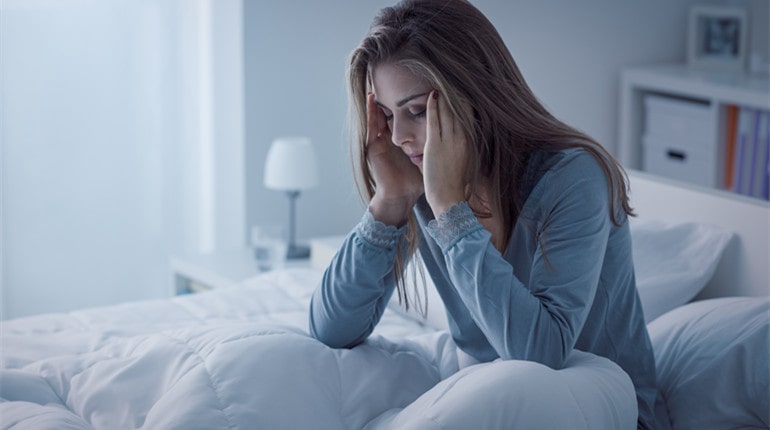Generalized Anxiety Disorder (GAD) casts a wide-reaching shadow over the lives of millions, presenting a persistent pattern of excessive worry, restlessness, and physical tension. For those grappling with this pervasive condition, finding effective treatments is paramount. While conventional approaches like therapy and medication remain invaluable, the exploration of alternative interventions opens new avenues of hope.
Among these, light therapy emerges as a promising contender. This non-invasive modality harnesses the power of specialized light exposure to influence neurotransmitter activity and regulate circadian rhythms, potentially offering a beacon of relief for individuals navigating the complex terrain of GAD.
This exploration delves into the science behind anxiety light therapy, scrutinizes its efficacy in managing GAD, and considers its place in the broader landscape of anxiety treatment, shedding light on a potentially transformative intervention in the realm of mental health care.
Understanding Generalized Anxiety Disorder: Symptoms and Impact
Generalized Anxiety Disorder (GAD) manifests as a persistent and often overwhelming sense of apprehension and worry that extends beyond specific triggers or situations. Individuals grappling with GAD frequently experience a range of physical, emotional, and cognitive symptoms that collectively contribute to its diagnostic criteria.
Physiologically, these may include restlessness, muscle tension, and a heightened state of arousal. Psychologically, pervasive feelings of unease, impending doom, or a sense that something catastrophic is about to happen are commonplace.
Additionally, individuals with GAD may struggle with concentration and find their minds racing with intrusive and worrisome thoughts, often about everyday concerns. It’s important to note that these symptoms persist over a prolonged period, typically spanning six months or more, and can significantly impair daily functioning, relationships, and overall quality of life.
Understanding the impact of GAD extends beyond the immediate discomfort of its symptoms. The persistent nature of this disorder can erode one’s sense of well-being and undermine their ability to engage in activities they once found enjoyable or fulfilling. Relationships may be strained as excessive worry and preoccupation consume their thoughts and energy.
The toll on physical health is also notable, with chronic muscle tension and heightened arousal potentially leading to secondary health issues. Sleep disturbances are common, exacerbating the overall sense of fatigue and exacerbating feelings of anxiety.
Furthermore, the chronic nature of GAD can contribute to the development of comorbid conditions, such as depression or other anxiety disorders, further complicating the clinical picture and necessitating a comprehensive treatment approach.
Symptoms Overview:
- Excessive worry and apprehension
- Restlessness and physical tension
- Difficulty concentrating or finding that the mind goes blank
- Irritability
- Muscle tension or aches
- Fatigue or feelings of being easily fatigued
- Sleep disturbances, including difficulty falling asleep or staying asleep
- Feelings of unease or impending doom
- Physical symptoms, such as sweating or trembling
- Gastrointestinal issues, like stomachaches or nausea
These symptoms collectively define the experience of individuals grappling with GAD, painting a picture of the challenges they face in navigating daily life. Understanding the multifaceted nature of GAD is a crucial step in identifying effective interventions, such as light therapy, that have the potential to provide relief and improve overall well-being.
Traditional Approaches to Treating Generalized Anxiety Disorder
Traditional approaches to treating Generalized Anxiety Disorder (GAD) typically encompass a combination of psychotherapy and pharmacotherapy. Cognitive Behavioral Therapy (CBT) stands as a cornerstone in the psychological treatment of GAD. This structured form of therapy focuses on identifying and challenging maladaptive thought patterns and behaviors that perpetuate anxiety.
Through techniques like cognitive restructuring and exposure therapy, individuals learn to reframe anxious thoughts and confront feared situations, ultimately fostering a more adaptive response to stressors.
Additionally, relaxation techniques, such as deep breathing exercises and progressive muscle relaxation, are often integrated to promote physical and mental calmness. These therapeutic strategies equip individuals with practical tools to manage their anxiety, enhancing their ability to navigate everyday challenges.
Pharmacotherapy is another vital component in the treatment arsenal for GAD. Antidepressants, particularly selective serotonin reuptake inhibitors (SSRIs) and serotonin-norepinephrine reuptake inhibitors (SNRIs), are often prescribed as first-line medications.
These drugs work by modulating neurotransmitter levels in the brain, specifically serotonin and norepinephrine, which play crucial roles in mood regulation. Benzodiazepines, while effective in providing rapid relief from acute anxiety, are typically reserved for short-term use due to the risk of dependence and potential side effects.
Other medications, such as buspirone, may also be considered as alternative options. The choice of medication is tailored to individual needs and preferences, and it’s common for healthcare providers to engage in a collaborative decision-making process with patients to ensure the best fit.
While these traditional approaches have demonstrated efficacy in managing GAD, they may not be universally effective for every individual. Some may experience side effects from medications or may find that psychotherapy alone doesn’t provide sufficient relief. This underscores the importance of exploring alternative and complementary treatments, such as light therapy, which may offer additional avenues for anxiety relief.
The Science of Light Therapy: How It Works in Anxiety Management
Light therapy, a non-pharmacological intervention, operates on the principle that specific wavelengths of light can profoundly influence our neurobiology and circadian rhythms. This therapy involves exposure to artificial light sources that mimic the natural spectrum of sunlight.
By doing so, it effectively regulates our circadian rhythms, which are the internal clocks that govern our sleep-wake cycles and various physiological processes. Through carefully calibrated light exposure, particularly during specific times of the day, light therapy helps to reset these biological clocks, ensuring that they align with our natural environment.
This synchronization plays a pivotal role in managing anxiety, as disruptions to circadian rhythms have been linked to mood disorders, including anxiety and depression. By realigning our internal clocks with external cues, light therapy establishes a more stable and harmonious physiological foundation, potentially alleviating symptoms of anxiety.
At a neurochemical level, light therapy exerts its influence by modulating key neurotransmitters involved in mood regulation. Exposure to bright light, especially during the morning hours, stimulates the production of serotonin, the “feel-good” neurotransmitter. This surge of serotonin enhances mood and promotes a sense of well-being, which can be particularly beneficial for individuals struggling with anxiety.
Additionally, light therapy suppresses the production of melatonin, a hormone essential for sleep. By inhibiting melatonin during daytime hours, light therapy helps individuals feel more awake, alert, and energized. This dual action on neurotransmitter levels underscores the potential of light therapy as an effective intervention in addressing the underlying mechanisms of anxiety.
By promoting the production of mood-enhancing neurotransmitters and regulating the hormonal balance critical for a healthy sleep-wake cycle, light therapy offers a scientifically grounded approach to anxiety management.
Studies and Clinical Trials: Assessing the Efficacy of Light Therapy for GAD
Studies and clinical trials examining the efficacy of light therapy for Generalized Anxiety Disorder (GAD) have yielded promising results, shedding light on its potential as a viable treatment option. These investigations have delved into various aspects of light therapy, including its impact on mood regulation, circadian rhythms, and overall well-being.
Controlled trials have demonstrated that consistent exposure to bright light, particularly in the morning, leads to significant reductions in anxiety symptoms among individuals with GAD.
Moreover, studies have shown that light therapy not only ameliorates specific anxiety-related symptoms but also contributes to an overall improvement in quality of life. These findings are bolstered by research employing standardized measures and clinical assessments, providing robust evidence of light therapy’s effectiveness in addressing the challenges posed by GAD.
While further research is warranted to refine protocols and establish optimal parameters, the existing body of evidence underscores the promising potential of light therapy as a valuable addition to the treatment armamentarium for GAD.
Comparisons with Conventional Treatments: Light Therapy vs. Medication or Therapy
Comparing light therapy with conventional treatments like medication or therapy offers valuable insights into their respective strengths and considerations in managing Generalized Anxiety Disorder (GAD). Medication, particularly selective serotonin reuptake inhibitors (SSRIs) and serotonin-norepinephrine reuptake inhibitors (SNRIs), has long been a mainstay in GAD treatment. These pharmaceutical interventions target neurotransmitter imbalances, providing relief from anxiety symptoms for many individuals.
However, they may come with potential side effects, ranging from mild to more severe, which can include weight gain, sexual dysfunction, and in some cases, increased anxiety or restlessness. Additionally, the process of finding the most effective medication and dosage can be a trial-and-error process, and discontinuation of these medications should be approached carefully to avoid withdrawal effects.
On the other hand, cognitive behavioral therapy (CBT) and other forms of psychotherapy provide individuals with practical coping strategies and tools to manage anxiety. This therapeutic approach addresses the underlying thought patterns and behaviors that contribute to GAD, fostering long-term resilience. However, therapy can be time-intensive and may not yield immediate relief, requiring consistent effort and commitment from the individual.
Comparison List:
Light Therapy:
- Non-pharmacological intervention
- Targets circadian rhythms and neurotransmitter levels
- Generally well-tolerated with minimal side effects
- Can be used in conjunction with other treatments
- Convenient and can be administered at home with proper equipment
Medication:
- Pharmacological intervention targeting neurotransmitters
- Offers rapid relief for acute anxiety symptoms
- Potential for side effects, including weight gain and sexual dysfunction
- Requires careful monitoring and adjustment of dosage
- Withdrawal symptoms may occur if discontinued abruptly
Therapy (CBT and Other Forms):
- Addresses underlying thought patterns and behaviors contributing to anxiety
- Provides long-term coping strategies and skills
- Requires time commitment and consistent effort from the individual
- No medication-related side effects
- May not yield immediate relief, necessitating patience and persistence
In comparing these treatment modalities, it becomes evident that each offers distinct advantages and considerations. Combining treatments, such as incorporating light therapy alongside medication or therapy, can offer a comprehensive approach to effectively manage GAD, providing individuals with a tailored and holistic treatment plan.
Ultimately, the choice of treatment should be individualized, taking into account the specific needs and preferences of the person struggling with GAD.
Practical Considerations: Implementing Light Therapy in GAD Treatment Plans
Practical implementation of light therapy in the treatment plan for Generalized Anxiety Disorder (GAD) necessitates careful consideration of various factors. First and foremost, it is crucial to select an appropriate light source. Light boxes designed specifically for therapy are equipped with the necessary intensity and spectrum of light to be effective.
When integrating light therapy into the treatment plan, it’s recommended to start with a low to moderate intensity, typically around 10,000 lux, as this mimics the intensity of natural sunlight. Positioning the light box at a comfortable distance and angle, where the individual can bask in the light without staring directly at it, is essential for a safe and effective session.
Timing is a critical aspect of successful light therapy. Exposure to bright light in the morning is generally recommended, as it aids in regulating circadian rhythms and jump-starting the production of serotonin, the “feel-good” neurotransmitter.
A session lasting between 20 to 30 minutes is commonly advised, although individual preferences and tolerances may vary. It’s vital to establish a consistent routine, ideally incorporating light therapy into the individual’s daily schedule. This regularity helps anchor circadian rhythms and ensures that the benefits of light therapy are sustained over time.
Step-by-Step Guide to Incorporating Light Therapy into a GAD Treatment Plan:
1. Select an Appropriate Light Source:
- Choose a light box designed for therapy with an intensity of around 10,000 lux.
2. Position the Light Box:
- Place the light box at a comfortable distance and angle, ensuring the individual can comfortably sit in front of it without directly staring at the light.
3. Set a Consistent Schedule:
- Establish a regular routine for light therapy sessions, ideally in the morning to align with natural circadian rhythms.
4. Determine Session Duration:
- Start with sessions lasting between 20 to 30 minutes, adjusting based on individual preferences and tolerances.
5. Integrate Light Therapy into Daily Activities:
- Encourage the individual to engage in other activities during the session, such as reading, working, or relaxing, to make the experience more enjoyable and sustainable.
6. Monitor Progress and Adjust as Needed:
- Regularly check in with the individual to assess their response to light therapy. Adjust the duration, intensity, or timing of sessions as necessary based on their feedback.
By following these steps and considering the practical aspects of incorporating light therapy into a treatment plan for GAD, individuals can optimize their experience and potentially reap the benefits of this non-pharmacological intervention. It’s important to note that consulting with a healthcare professional or mental health provider is crucial to ensure that light therapy is integrated safely and effectively into the overall treatment plan for GAD.
Conclusion
In conclusion, the integration of light therapy into the treatment plan for Generalized Anxiety Disorder (GAD) represents a promising avenue in the quest for effective interventions. Its non-pharmacological nature, coupled with its ability to regulate circadian rhythms and modulate neurotransmitter levels, positions light therapy as a valuable complement to traditional approaches.
By understanding the practical considerations and steps involved in its implementation, individuals and healthcare providers can harness the potential benefits of light therapy in alleviating the burdens of GAD. It is important to underscore that treatment plans should be individualized, and consultation with a healthcare professional is essential to ensure the safe and appropriate incorporation of light therapy into the broader spectrum of anxiety management.
With careful consideration and adherence to best practices, light therapy offers a beacon of hope for those navigating the complex landscape of Generalized Anxiety Disorder.



